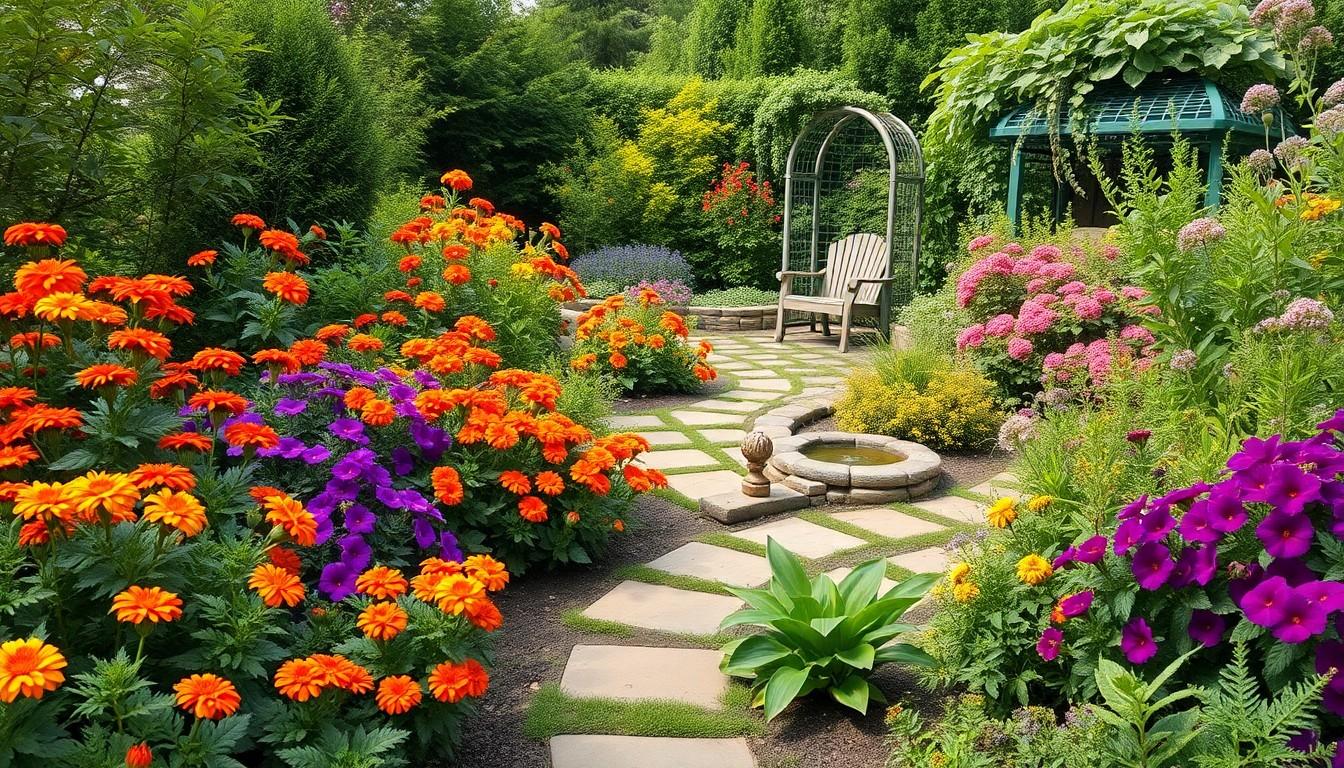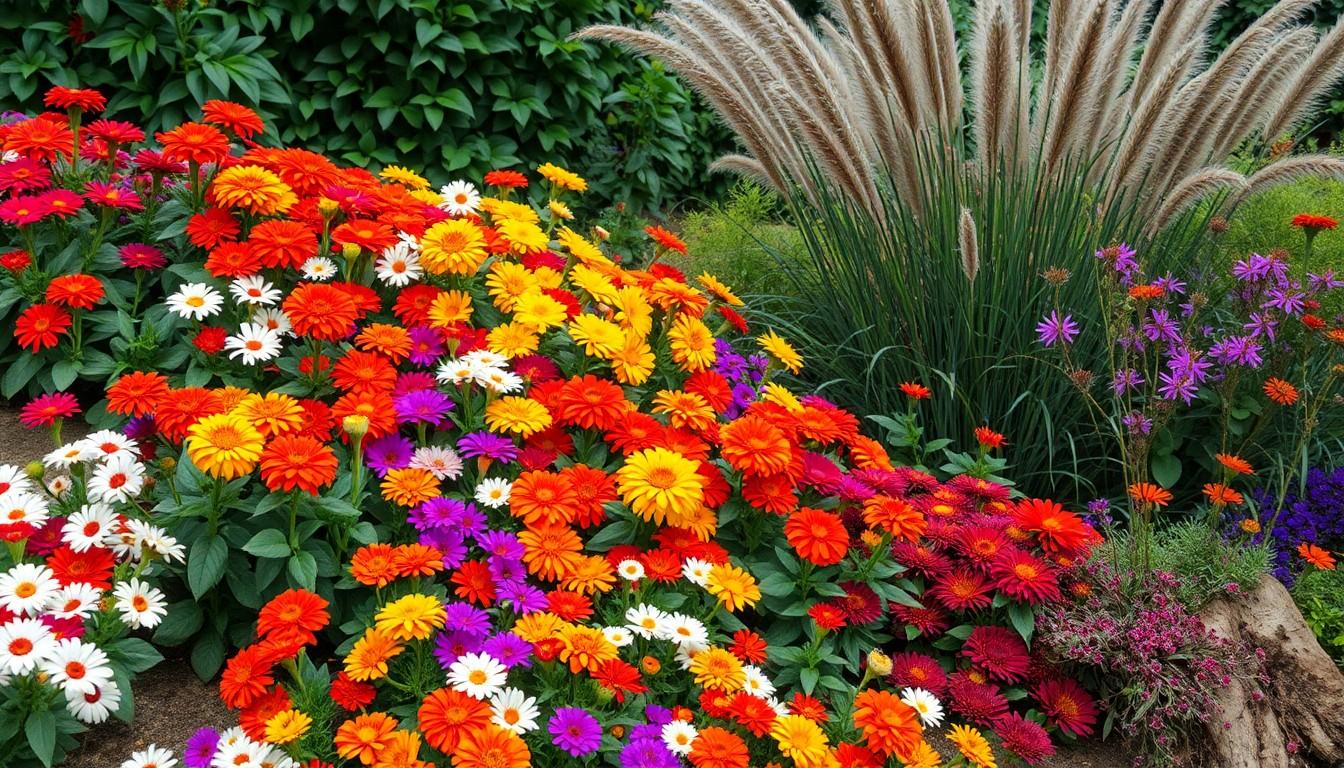Phone:
(701)814-6992
Physical address:
6296 Donnelly Plaza
Ratkeville, Bahamas.

Imagine stepping into a garden that feels like a scene straight out of a fairytale. An aesthetic garden isn’t just a patch of grass and a few flowers; it’s a vibrant tapestry that invites wonder and relaxation. With the right combination of colors, textures, and design elements, it transforms any outdoor space into a personal paradise.
Understanding aesthetic gardens highlights their role in enriching outdoor spaces. These gardens serve as places of beauty and tranquility, blending natural elements with thoughtful design.
An aesthetic garden represents a curated outdoor area designed for visual pleasure and emotional comfort. It transcends traditional gardening by prioritizing aesthetics, functionality, and harmony within the environment. Importance lies in the mental health benefits these spaces provide, promoting relaxation and well-being. Studies show that spending time in beautifully crafted gardens reduces stress and enhances mood. Aesthetic gardens also encourage social interaction and community engagement, making them vital in urban settings where nature might be less accessible.
Several key characteristics define aesthetic gardens. Colorful plant selections create vibrant displays that captivate viewers. Diverse textures, including smooth leaves and rough bark, invite tactile exploration. Strategic design elements, such as pathways and seating areas, enhance usability and create points of interest. Seasonal changes add dynamism, ensuring the garden evolves throughout the year. Incorporation of water features often introduces soothing sounds, attracting wildlife and enhancing ambiance. These elements collectively foster a unique and welcoming environment that resonates with personal expression and creativity.

Design principles play a crucial role in crafting an aesthetic garden that captivates the senses. Key components include color harmony, texture, and layering.
Color harmony enhances visual appeal in any garden. It involves selecting plant species that complement each other. Utilizing a color wheel can help gardeners choose analogous or complementary colors, creating a cohesive look. Bright flowers like daisies contrast beautifully with lush green foliage. Seasonal blooms add dynamic changes throughout the year. This continuous shift in color invites visitors to return. Varieties such as marigolds, petunias, and zinnias provide vibrant options. Focusing on harmony in plant selections elevates the garden’s overall atmosphere.
Texture and layering bring depth to the garden design. Varied foliage types create visual interest and enhance the overall aesthetic. The interplay of smooth leaves with rough bark encourages curiosity. Incorporating plants at different heights fosters a sense of rhythm. Taller plants can act as a backdrop for shorter species, creating a tiered effect. Consider using ornamental grasses or shrubs alongside seasonal flowers to add diverse textures. This combination adds dimension and draws attention to specific areas. Layering also facilitates easy maintenance by allowing access between plants. Prioritizing texture provides a rich, inviting experience for all who visit.
Aesthetic gardens come in various styles, each offering unique visual and sensory experiences. Understanding these styles helps in selecting the right approach for personal outdoor spaces.
Cottage gardens exude charm and nostalgia with their informal layouts. Dense planting of colorful flowers like daisies, foxgloves, and hollyhocks encourage biodiversity. The use of climbing plants and trellises adds vertical interest. Pathways made of stone or gravel create inviting strolls through vibrant blooms. Garden decor often includes rustic furniture and whimsical accessories, enhancing the overall appeal. These elements foster a relaxed atmosphere that reflects individual creativity while promoting a connection to nature.
Zen gardens prioritize tranquility and simplicity, emphasizing minimalism in design. Raked gravel creates patterns that symbolize rippling water, complemented by carefully placed rocks representing mountains. Strategic plant selections like bamboo and moss provide subtle greenery without overwhelming the senses. Water features, though minimal, evoke a sense of calm, enhancing the serene environment. Each element reinforces mindfulness and contemplation, making them ideal retreats for relaxation. These gardens support a peaceful ambiance, allowing individuals to connect with their surroundings in a harmonious manner.
Selecting plants for aesthetic gardens requires careful consideration. A balanced mix of color, texture, and height creates a visually striking space while ensuring the garden thrives.
Opting for native plants often leads to greater success. These species adapt to local conditions, thriving with minimal maintenance. Incorporating annuals and perennials offers continuous blooms throughout the seasons. Consider combining tall plants like sunflowers with shorter varieties such as marigolds for dynamic height variation. Grouping plants in odd numbers often enhances visual interest. Incorporate plants with varying leaf shapes and colors to create depth and intrigue.
Planning for seasonal diversity keeps the aesthetic fresh year-round. Selecting early bloomers like crocuses can herald spring, while fall favorites like chrysanthemums extend color through autumn. It’s essential to consider winter interest too; evergreen shrubs maintain structure when other plants are dormant. Rotating plant selections based on seasonal changes invites a continual transformation. Keeping a seasonal plan in mind fosters both visual impact and ecological balance throughout the year.
Routine maintenance ensures that aesthetic gardens thrive. Specific practices keep gardens looking vibrant and welcoming throughout the year.
Watering consistently remains essential. Most plants require about an inch of water per week, depending on the weather. Pruning plants encourages healthy growth and prevents overcrowding, particularly in flower beds filled with annuals and perennials. Fertilizing every few months supports robust plant health, especially for nutrient-hungry varieties. Weeding regularly keeps garden beds tidy, reducing competition for resources. Monitoring for pests and diseases allows for timely intervention, ensuring plants remain healthy. Observing the garden helps identify areas needing extra attention, maintaining its beauty and vibrance.
Adapting to seasonal changes remains crucial for maintaining an aesthetic garden’s beauty. Spring clean-up involves removing debris, dead foliage, and any unfinished winter remnants. Summer care focuses on adjusting watering schedules, especially as temperatures rise. Fall provides an opportunity for planting perennials and preparing the garden for winter’s dormancy. Winter maintenance includes protecting delicate plants with mulch or covers, ensuring they survive the cold months. Each season offers a chance for reflection and adaptation, contributing to the garden’s ongoing vitality and visual interest.
Creating an aesthetic garden is about more than just planting flowers. It’s an opportunity to cultivate a personal retreat that offers beauty and tranquility. By thoughtfully combining colors, textures, and design elements, anyone can transform an outdoor space into a captivating environment that encourages relaxation and connection with nature.
The mental health benefits of such spaces cannot be overstated. They provide a peaceful escape from daily life while fostering community engagement. With the right plant selection and maintenance practices, these gardens can thrive through the seasons, offering visual delight year-round. Embracing the art of garden aesthetics not only enhances outdoor spaces but also enriches the overall quality of life.